These 12 "Fountain of Youth" Foods Will Help You Look Younger
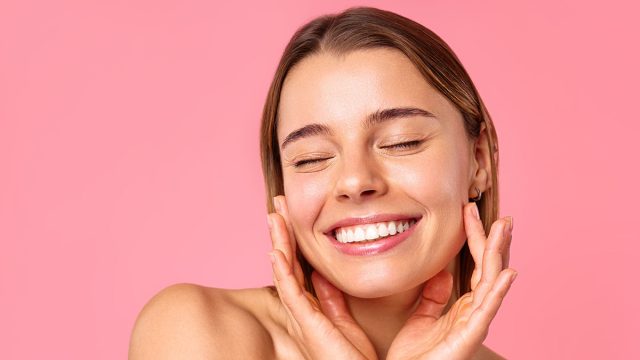
When it comes to achieving youthful, radiant skin, what you put in your body is just as important as the products and makeup you use. Certain foods contain powerful antioxidants, vitamins, and minerals that can slow down the aging process, boost collagen production, and promote glowing skin and a healthy body. Our skin is the largest organ in our body. As an anti-aging skin care and frequency technology expert, I remind my clients that incorporating these foods and eliminating others can have a lasting effect on how you look and feel. Below are the top anti-aging foods you should eat for lasting health and beauty. Although it might not be possible to eat all these foods every day, being aware of what your body likes and needs is very important.
Avocados
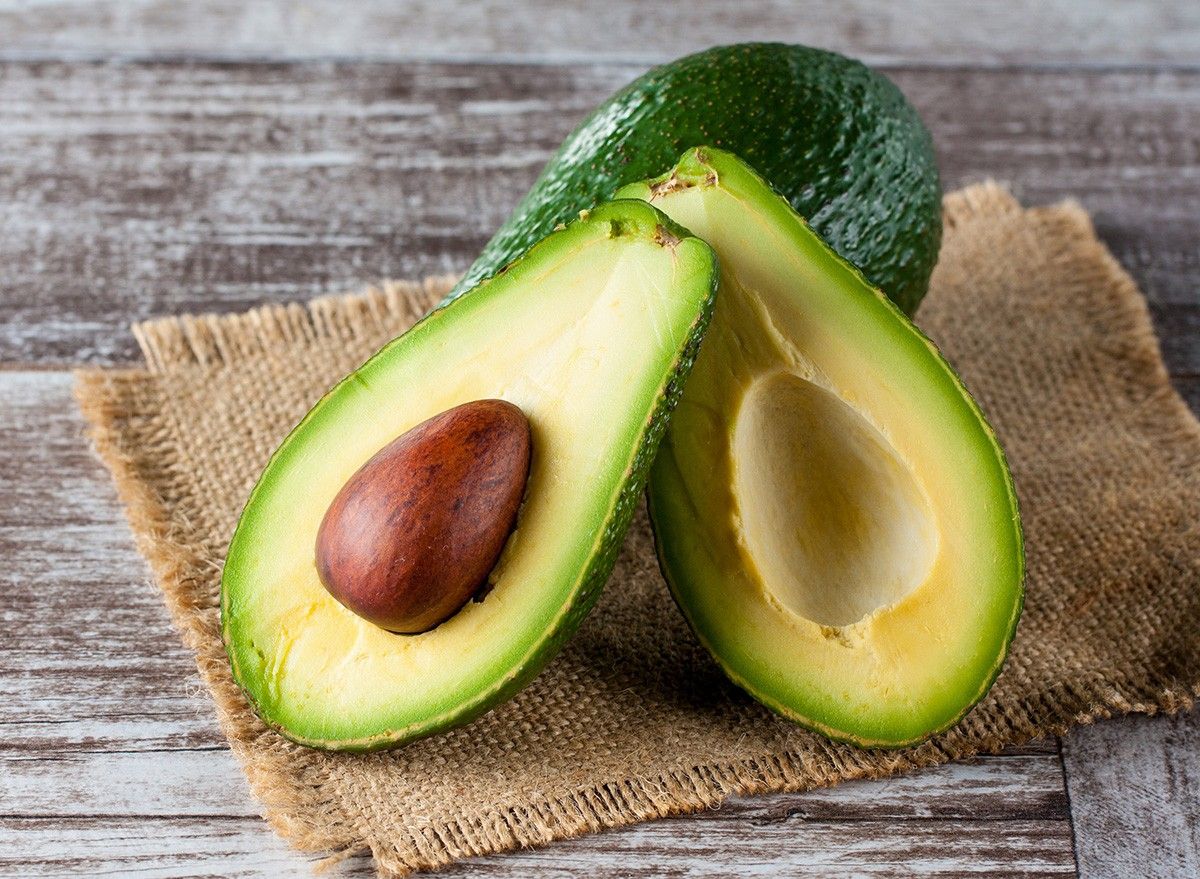
Avocados are rich in healthy fats, particularly monounsaturated fats which help keep your skin hydrated and supple. They also contain vitamin E which is a powerful antioxidant that protects your skin from oxidative damage, which is one of the main contributors to aging. Try including them in salads, blending them in smoothies, and in fact there are a lot of healthy desserts that are being made with avocados. And, they are delicious.
Blueberries
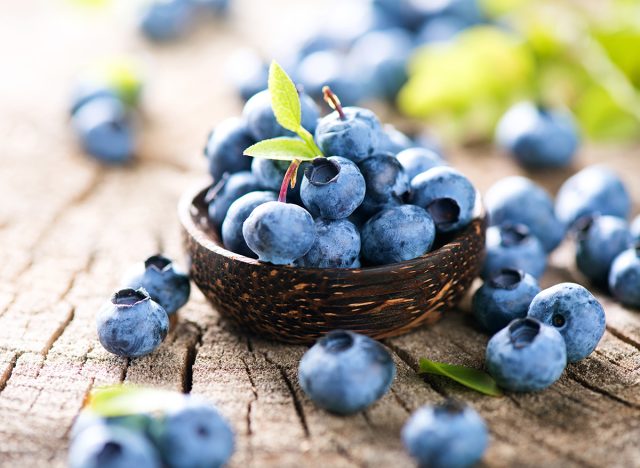
Blueberries are packed with fiber, vitamin C, vitamin K, manganese, and potassium. They are low in sodium and have virtually no fat. They also help reduce chronic disease, improve cholesterol levels and heart health, and reduce high blood pressure. You can eat them directly as a snack or add them to your breakfast or in your smoothies.
RELATED: I Dropped From a Size 10 to a 4 by Eating These 10 Foods
Salmon or Fatty Fish
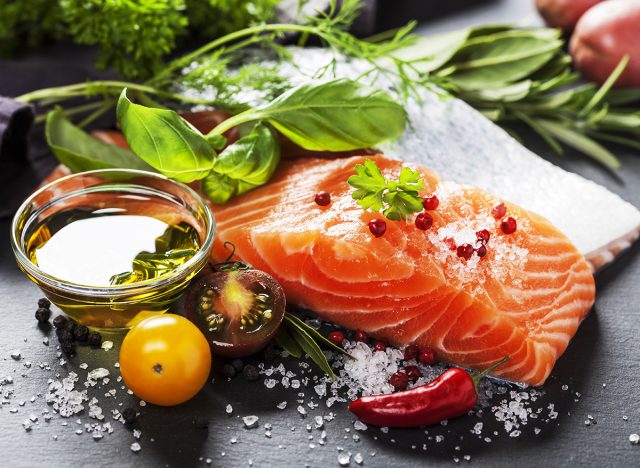
Fatty fish is an excellent source of omega-3 fatty acids, which are known to reduce inflammation and keep the skin moist. Omega 3 also supports the skin's lipid barrier, protecting it from damage caused by sun exposure and environmental pollutants. Eat broiled, baked, or pan-seared fish at least twice a week. Salmon specifically contains a carotenoid antioxidant called astaxanthin. It is high in protein, which is important to improve skin elasticity and hydration. It is also high in selenium. This mineral and antioxidant plays a role in DNA synthesis and repair.
Leafy Greens
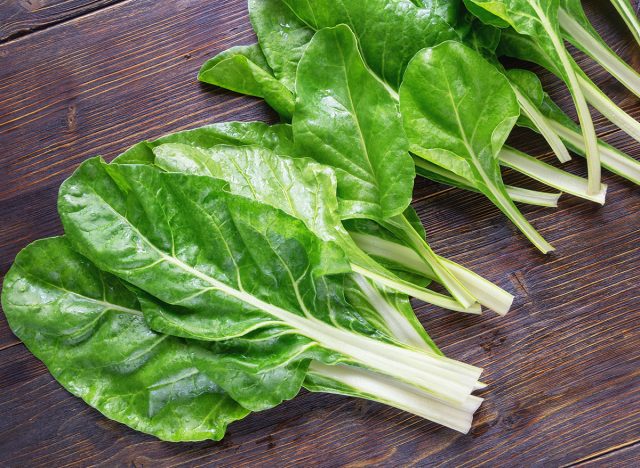
Vegetables like spinach, kale and swiss chard are loaded with essential vitamins like A, C, E and L, which work together to improve skin texture, reduce wrinkles and brighten your complexion. Vitamin K also helps reduce dark circles under your eyes. You can incorporate them into salads, soups or smoothies for an antioxidant boost.
Dark Chocolate
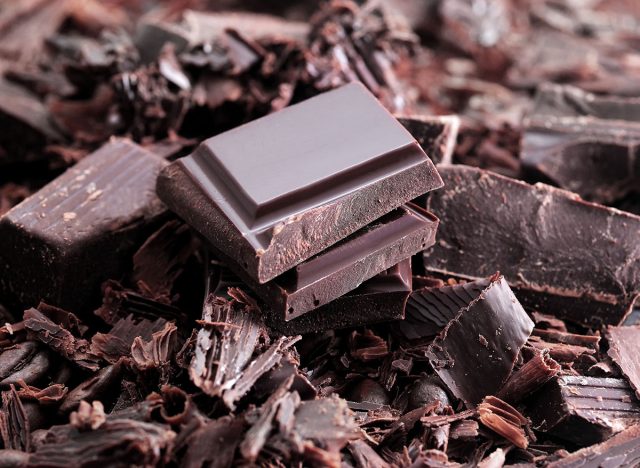
Dark chocolate, containing at least 70% cacao, has been associated with a lower risk of heart disease and hypertension, and lower blood pressure. It contains flavonoids, which have various health effects, like reducing inflammation and keeping your blood vessels flexible. It has even been proven to slow down the aging process itself. It can even improve skin aging. Plus it is delicious.
Nuts
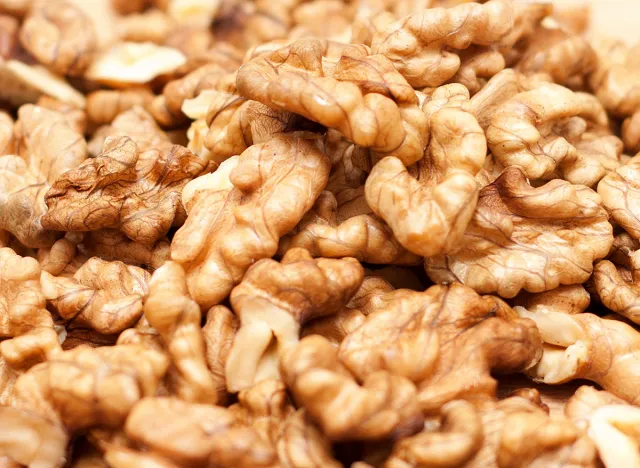
Nuts – especially walnuts – walnuts are a great source of omega-3 fatty acids, particularly alpha-linolenic acid (ALA), which helps retain moisture in the skin. They also contain vitamin E and zinc, both of which are essential for maintaining healthy, glowing skin. Nuts also protect the brain against Alzheimer's disease and improve cognitive function. They have also been associated with less insulin resistance and reduced risk of type 2 diabetes, hypertension, and even colon cancer. Enjoy a handful of nuts as a snack, or add them to salads.
RELATED: I Finally Banished Belly Fat in My 40s by Doing These 8 Things
Olive Oil
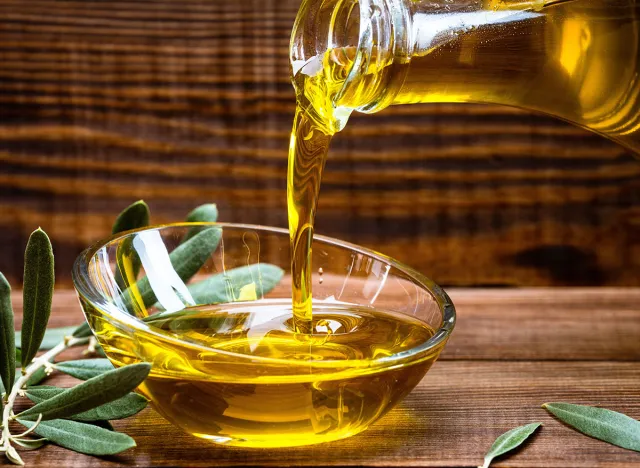
Olive oil is high in monounsaturated fats and antioxidants, particularly vitamin E, which nourishes the skin from the inside out. It also contains squalene, a compound that keeps the skin hydrated and reduces the appearance of fine lines. Use extra virgin olive oil as a base for salad dressings or drizzle it over cooked vegetables for a healthy skin boost.
Apples
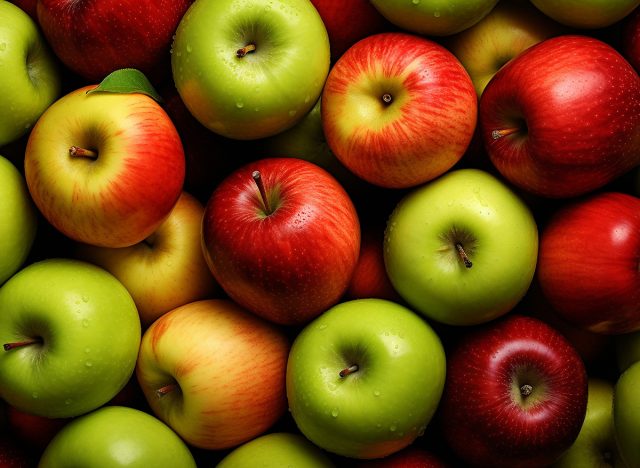
Apples contain various substances that can reduce the risk of asthma by reducing inflammation, heart disease, Alzheimer's, and even cancer. The health effects of apples can improve the health of the blood vessels, immune cells, brain cells, and even the microbiome.
Green Tea
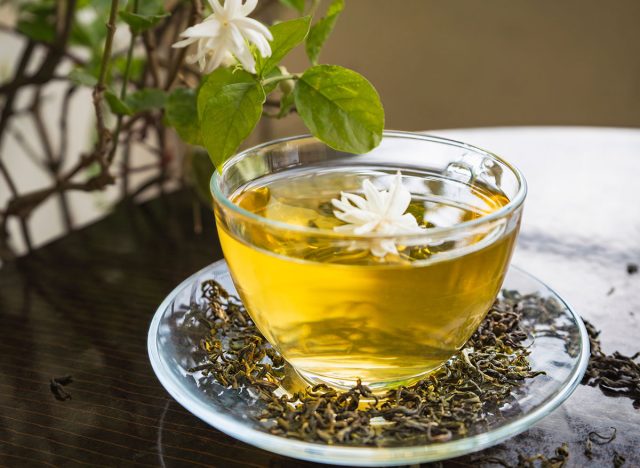
Green tea is rich in polyphenols, especially catechins, which protect the skin from oxidative stress and improve its elasticity. Drinking green tea regularly can also reduce redness and inflammation, promoting an even skin tone.
RELATED: Tarah Schulte in 2-Piece Workout Gear Reveals How to Lose 20 Pounds in 4 Months with 9 Easy Habits
Sweet Potatoes
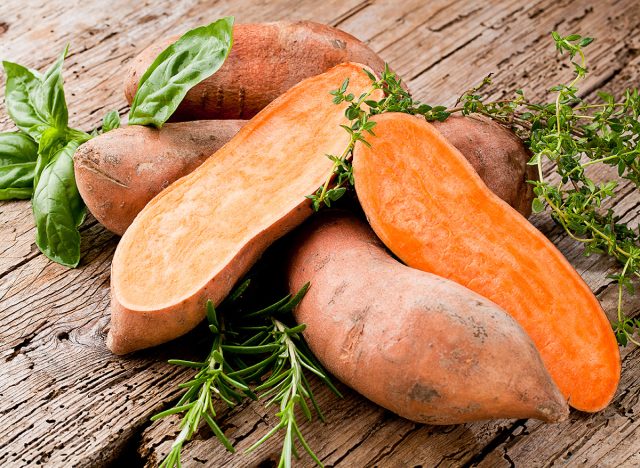
Rich in beta-carotene, sweet potatoes convert to vitamin A in the body, helping to promote cell turnover and improve skin tone. Vitamin A is crucial for reducing the appearance of fine lines and keeping the skin smooth. Bake or roast sweet potatoes as a side dish or add them to salads for a nutritious skin-boosting meal.
Tomatoes
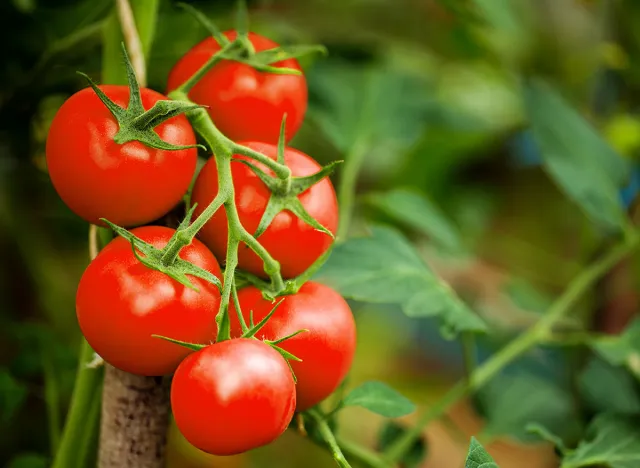
Tomatoes are rich in lycopene, a powerful antioxidant that helps protect the skin from sun damage and premature aging. Lycopene also improves skin texture and reduces the appearance of fine lines. Add tomatoes to salads, soups, or sauces, or eat them fresh with a sprinkle of olive oil to enhance lycopene absorption.
Red Bell Peppers
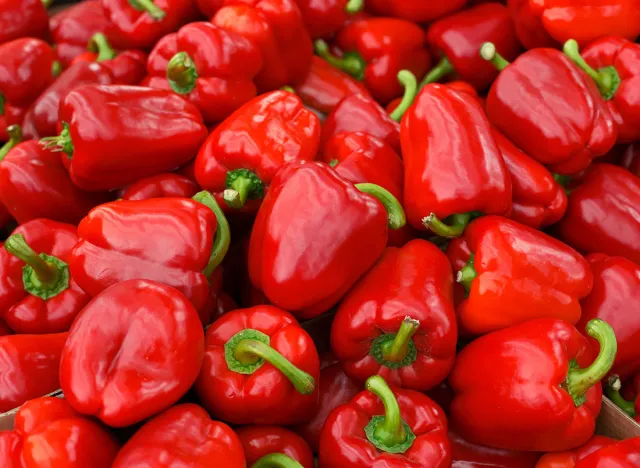
Red bell peppers are loaded with vitamin C, which is vital for collagen production and maintaining the skin's elasticity. They also contain carotenoids, which reduce inflammation and protect the skin from sun damage. Add them to salads, stir-fries or snack on them raw with hummus.
You Are What You Eat, and So Is Your Skin

The foods you eat play a significant role in how your skin ages. By incorporating these anti-aging foods into your daily diet, you can nourish your skin from within, reducing the appearance of fine lines, wrinkles, and other signs of aging. Not only will your skin look younger, but you will also feel healthier and more radiant.
RELATED: Forget Xanax: This Natural Stress Hack Works in Seconds, Expert Says
You Need to Take a Holistic Approach to Beauty and Skincare

In my work, I believe in a holistic approach to beauty and skincare. Along with our cutting-edge, non-invasive treatments, nourishing your skin from the inside out is crucial to achieving lasting results. And if you enjoyed this article, take advantage of these 20 Superfoods for People Over 50.




